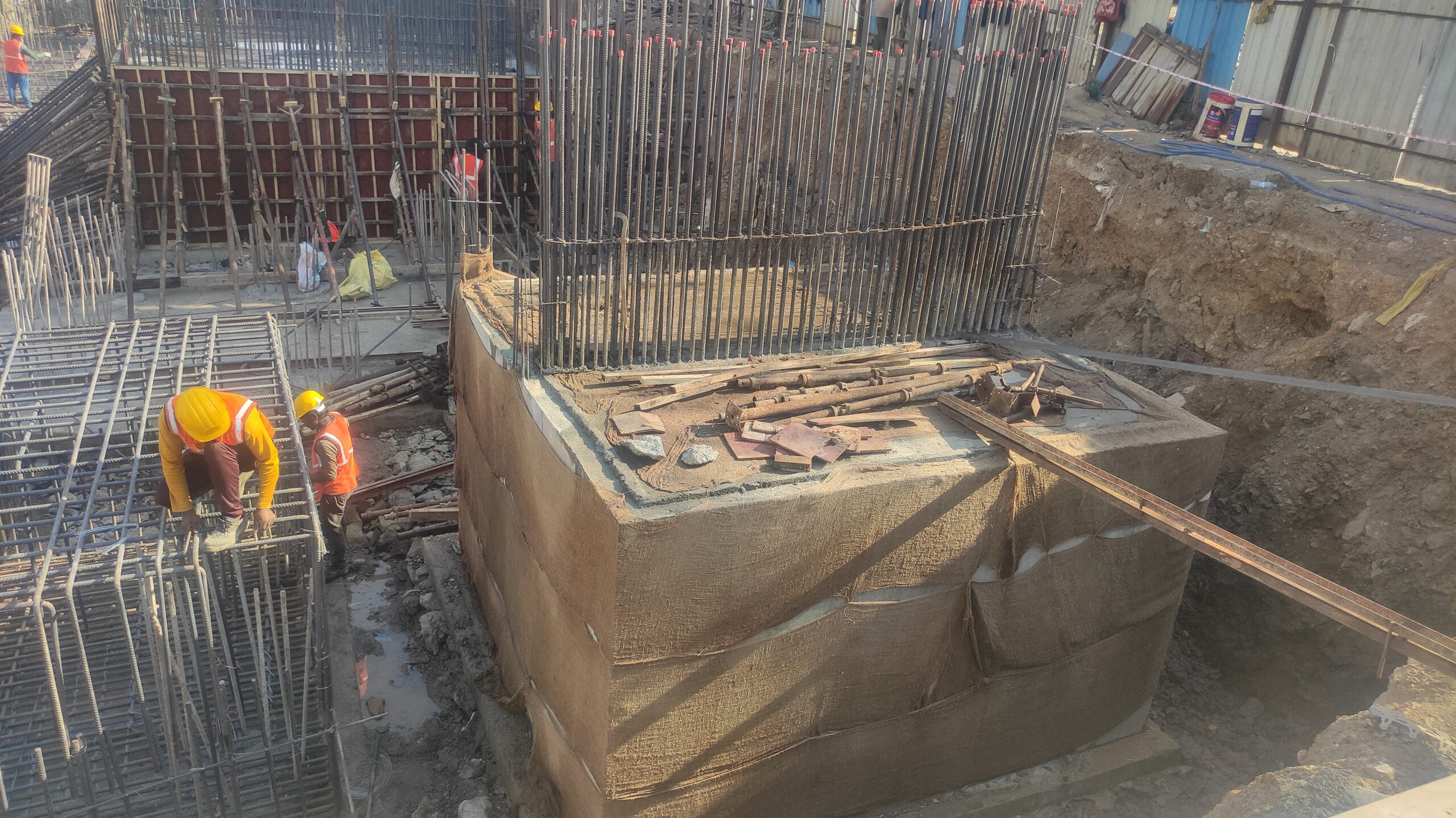Skip to content

1. Activities and Activity Description of work
- Providing, and erecting form work at all levels and places staging for casting footings of different heights, profiled formwork as per drawing using Conventional system form work including striking and de-striking using adjustable Screw jack and with sufficient bracing form work and staging system to suit the requirements de-shuttering, complete at all levels and profiles as per detailed drawings.
2. Reference/Tracking
- The work sequence shall be executed as per Schedule and GFC Drawings issued by Client.
3. Tools
- Trowel.
- Measuring tape.
- Straight Edge.
- Level gauge.
- Line dory.
- Electrical vibrator with needles (40 to 60 mm).
- Plumb bob.
- 12 mm ply wood with film coated.
- Runners.
- Adjustable screw jacks.
4. Materials
- Concrete Grade shall be GFC drawing.
5. Personal Protective equipment
- Proper PPE’S shall be Provide for all respective workers and regularly well monitoring and kept
good condition
- Head Protection.
- Foot/Toe Protection.
- Cotton Gloves/Rubber hand gloves.
6. Safety
- The accessories should be properly fastened at every stage and there should not be loose materials lying around the place of work. They can fall from heights endangering safety of men.
- Form work should be continuously watched during and after concreting by a competent person. It is advisable to watch for loosening of nut washers and wedges during vibration.
- Rate of rise of concrete in the forms should not exceed that for which they are designed. Limits set by the designer on vibration should also be followed. Reasonable care by the operator is necessary to avoid scarring or roughening the forms by operating vibrators against them.
- The access walkways and working platforms should be sufficiently wide and with Method Statement adequate safety provisions like proper and hand rails.
- While de-shuttering and dismantling form work, apart from considering the safety of form work and staging, the safety of concrete structure itself should be kept in mind. The removal of form should permit the concrete to take its load gradually and uniformly without impact or shock
- Improper sequence of stripping can lead to sudden dropping of form components causing injury to workmen and also causing damage to form work materials reducing its reuse value
METHOD STATEMENT
1. SHUTTERING
- The grid lines shall be transferred from the grid pillars and marked on the PCC of footings.
- Shuttering shall be done using clean & properly coated with mold releasing agent. Good shuttering forms shall be erected as per the grid lines and after checking for the eccentric layout of center from the grid lines.
- Ensuring all supports are given in a way bulging are avoided.
- The joints of shuttering forms shall be sealed with foam to prevent slurry loss.
- Shuttering shall be done as per the required dimension of the footings and the depth of concrete shall be marked on the forms by nails.
- Checking shall be for check for levels and plumb.
- The shuttering for footings shall be done in such a manner that both the rectangular can be casted monolithically.
- The formwork shall be striked off after 16 Hrs. of pouring.
- Removal of forms shall be done carefully to avoid breaking of edges.
- Checklist shall be maintained for formwork.

2. REINFORCEMENT
- Bar cutting and bending schedule shall be as per GFC.
- Reinforcement bars shall be cut and bent according to the bar bending schedule.
- The reinforcement shall be tied with using 18-gauge GI binding wire.
- The cover to the reinforcement shall be given using 75mm (side) and 50mm (Bottom) PVC
- cover blocks/as shown in the drawing.
- The PCC on which the footing mat is to be placed shall be cleaned of any mud or loose aggregates before placing the reinforcement.
- Lapping, development lengths to follow the GFC structural drawings.
- Checklist shall be maintained for Reinforcement.
- No overlapping of column reinforcement should be allowed at footing level.
- Column stirrups have to be tied up to plinth beam level before concreting of footing.
- Adequate support should be provided for verticality of column reinforcement.
3. CONCRETING
- Before starting the concrete. Pour card sign off to be taken from client.
- The grade of concrete shall be as per approved Drawing.
- The slump of concrete shall be checked at site. (50mm to 100mm for manual and 120mm for pump conc. + 0r – 25mm)
- If concrete is done using RMC, the same has to be consumed before 3 hrs. from batching time.
- No water to be added at site manually to increase workability.
- The compaction shall be done using immersion vibrator.
- Sufficient Nos. of Electrical vibrators and needles shall be kept in spare.
- The compaction of concrete shall be supervised strictly to ensure that concrete fits tightly to the form surface and reinforcement and entrapped air in the concrete is removed.
- Concrete cubes shall be casted according to the frequency specified in the IS 456/as per Outside RMC Code.
- The top surface of the footing shall be made smooth and the column bases shall be made rough.
- If the pouring is done manually, then there shall be provision of clean chutes and platform of MS sheet.
- Shear keys should be provided for bonding of upper level concrete.
- The date of casting shall be written in the concrete surface.
- 7days Curing shall be done by covering the concrete with Hessian cloth and keeping it moist by sprinkling water.
- Back filling to be done only after completion of curing of footing.

Records maintained
- CONCRETE POUR CARD with check lists


